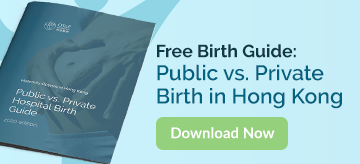Birth planning helps prepare for birth through anticipation and visualisation of labour and birth scenarios and discussion of how you will navigate them. The process will help to identify your knowledge about what happens during and after labour, your coping mechanisms, and reveal any aspects you may not have considered.
It is only natural to be afraid of the unknown, but being aware of everything that goes into giving birth, combined with a good birth plan will help to reduce your anxiety. At the end of the birth planning process, you should feel informed, empowered and ready for labour.
How do I make a birth plan?
The first part of the process involves thinking about labour and what it will be like. Let’s face it though, if this is your first baby, you’ve never been in labour or given birth before, so it’s hard to know what to expect. There is no way to predict what your labour will feel like, what you will be going through mentally or physically or what you will want at the time. It may help to watch birth videos or listen to others experiences but it’s important to recognise that birth stories are very personal and only give a one-sided version of events. Try not to let these influence you too much as your birth plan should be individual to you. Think about what you learned about in prenatal classes, the options that are available to you and things you would like to try during your labour e.g. positions, comfort techniques, pain relief, and so forth.
Having firm expectations may lead to disappointment and feelings of failure, so it is best you and your partner retain a level of flexibility. View birth planning as a way of informing your caregivers of what is important for you both, your preferences, and the actions that will be most supportive and helpful to you.
Childbirth is an incredibly unique and personal experience that you’ll only fully understand after the event. Even if this is not your first baby, each labour is different and unpredictable. Birth planning for subsequent births may involve discussing and reflecting on what happened before – how it felt, how you coped, what helped, whether it all went to plan, etc. It will help in identifying what you might like to be different this time around. Birth planning for following babies often evokes strong emotions and memories, and can unexpectedly turn into a debriefing exercise. This can be a cathartic experience for both parents, particularly for mothers in approaching the new birth positively.
Do I need to follow a birth plan template?
It is not necessary to produce a written birth plan, some couples prefer to chat over options and verbally inform staff on the day. However, to avoid anything being lost in translation a written plan is the way to go. It will help the hospital team better understand what you want, and it will also provide continuity of care between shift changes.
There are many birth plan templates available, your hospital may also have their own one that will better reflect the labour services and choices that they provide. If you want to write your own, it is best to keep it simple so that your caregivers can quickly identify your requests. A bullet-point format that is split into sections may help e.g., labour, birth, placenta, postnatal. Below are some key points you may wish to include and discuss in greater detail with your midwife:
- Mobility and positions for labour and birth
- Monitoring of fetal heart rate (intermittent or continuous)
- Pain relief
- Delivery of the placenta (active or natural)
- Delayed cord clamping
- Partner cutting the cord
- Skin to skin contact
- Breastfeeding/formula feeding
- New-born vaccinations
Your birth plan may need to adapt or change if you are having an elective caesarean section or a planned induction of labour. It is helpful to have two copies of your birth plan in your hospital bag – one for the staff and one for your birth partner. OT&P Annerley has its own birth plan template that you can access here.
Who can help with the birth plan?
Once you have made your birth plan, ideally go through it with your midwife. She will have hands-on experience of childbirth and will know more about the facilities and choices available at local hospitals. She will be able to manage expectations and ensure your birth plan is realistic and achievable in the context of the birth environment. Your midwife will also help you to add and finalise details and identify key points to raise with your delivery team.
Labour can be stressful so it is vital that your birth partner is involved in the birth planning as they will be the one who is there to continuously support you and act as your advocate – it’s very hard to answer questions when you are dealing with contractions! For birth partners, a birth planning consultation with a midwife provides the opportunity to review and refresh what has been learned in antenatal classes and to ask further specific questions. Most importantly, a birth planning consultation will ensure that you are both on the same page.
How to create a plan for giving birth in Hong Kong
Physically speaking, labour and delivery are the same all around the world. The only relevant differences between countries relate to access to healthcare and cultural differences.
In Hong Kong, health care is generally of an excellent standard no matter the hospital. You should familiarise yourself with your hospital’s policy and procedure, ward environment and facilities – as those are the things that vary from one hospital to another. When planning for giving birth in Hong Kong, parents can choose between public and private hospitals, both of them offering excellent prenatal, antenatal, and postnatal care.
The table below highlights some of the differences between the public and private hospital systems. Please note, it is a guide only, subject to change, and has been created from OT&P Annerley midwives’ experience.
|
Birth and postnatal options |
Public Hospital |
Private Hospital |
|
Birth partner present during early labour |
No |
Yes |
|
Birth partner present for active labour |
Yes, for most hospitals |
Yes |
|
Birth partner present for birth |
Yes |
Yes |
|
Birth partner present for elective caesarean section |
Yes |
Yes |
|
Birth partner present for emergency caesarean section |
Not always |
Yes, usually |
|
Birth partner present for emergency caesarean section if general anaesthetic required |
No |
Not usually |
|
Elective caesarean (without medical or obstetric reason) available on request |
No |
Yes |
|
Toilet available in the labour room |
No |
Yes |
|
Bath/shower available in the labour room |
No |
Yes, most will have access |
|
Epidural |
Yes, but not immediately available (depends on service demands at the time) |
Yes, can be sited soon after request |
|
Entonox |
Yes |
Yes |
|
Pethidine/opioid injection |
Yes |
Yes |
|
Eating and drinking in active labour |
Not usually |
Yes, usually OK |
|
Students present |
Yes |
No |
|
Rooming-in with baby |
Yes |
Depends on the room (may not be possible in a shared room) |
|
24-hour nursery care available for baby |
Not usually |
Yes |
Help at OT&P
Whatever your preparation plans, whether it be a formal written birth plan or that you simply want to chat things over before the big day, we have a team of experienced midwives and obstetricians to support you through everything related to giving birth. Please know that experienced OT&P midwives are here and happy to help, and we also offer pre-natal classes for parents. We have recently made available an e-book which walks you through options for care and explains the differences between public and private hospital birth, you can download it below.

 Central General Practice
Central General Practice
 Repulse Bay
Repulse Bay
 Clearwater Bay
Clearwater Bay
 BodyWorX Clinic
BodyWorX Clinic
 Central Specialist Clinic
Central Specialist Clinic
 MindWorX Clinic
MindWorX Clinic
 Partner Clinics
Partner Clinics
 Family Clinic
Family Clinic
 OT&P Annerley Midwives Clinic
OT&P Annerley Midwives Clinic


